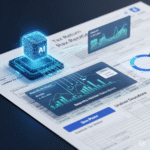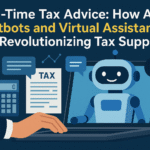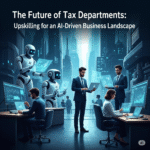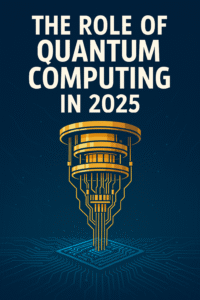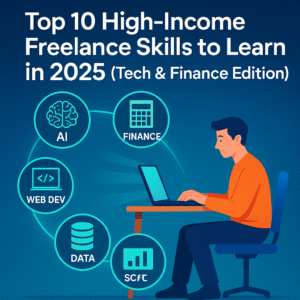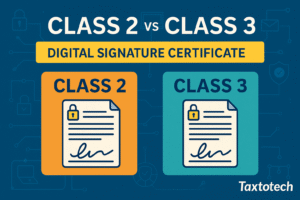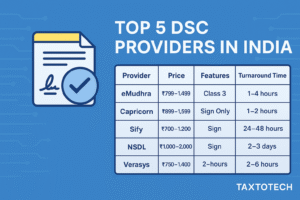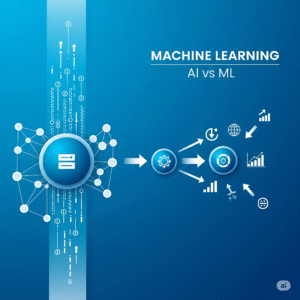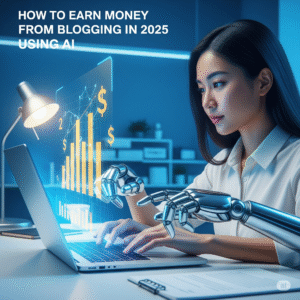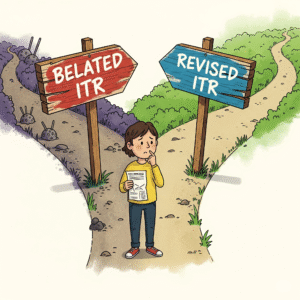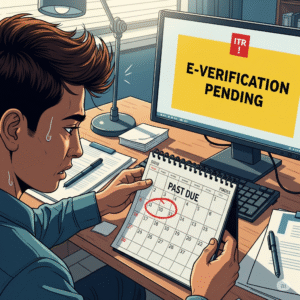For multinational corporations, tax departments operate in a labyrinth of complexity. Varying international regulations, intricate intercompany transactions, transfer pricing complexities, and the sheer volume of financial data make optimizing corporate tax strategy a monumental challenge. Historically, tax professionals have relied heavily on spreadsheets, manual data compilation, and retrospective analysis – methods that, while foundational, are increasingly inadequate in today’s fast-paced, highly scrutinized global economy.
The limitations of these traditional approaches are becoming starkly apparent, leading to inefficiencies, increased compliance risks, and missed opportunities for significant tax savings. But the future is here, and it’s powered by AI-powered tools. At Taxtotech, we understand that these advanced solutions are not just about automation; they’re about transforming corporate tax functions from reactive compliance centers into proactive strategic hubs. Let’s delve into how AI is enabling corporations to move far beyond spreadsheets to achieve unprecedented levels of accuracy, efficiency, and strategic advantage in their tax operations.
The Corporate Tax Challenge in a Globalized World
The complexity of corporate tax is amplified by several factors unique to large organizations and multinational enterprises:
- Global Regulatory Maze: Navigating the ever-evolving tax laws across multiple jurisdictions is a full-time job. What’s compliant in one country may not be in another, and keeping up with changes is a constant struggle.
- Massive Data Volume: Corporations generate enormous amounts of financial data from various ERP systems, accounting software, and operational platforms. Consolidating, cleansing, and analyzing this data manually for tax purposes is an monumental task.
- Intercompany Transactions & Transfer Pricing: Managing transactions between related entities across borders requires adherence to complex “arm’s length” principles, generating vast documentation, and facing intense scrutiny from tax authorities.
- High Stakes of Non-Compliance: Errors or intentional missteps in corporate tax can lead to severe penalties, reputational damage, and costly audits.
- Strategic Optimization: Beyond compliance, identifying legal avenues for tax efficiency (e.g., leveraging tax treaties, R&D credits, optimal entity structuring) requires deep analysis that traditional tools struggle to provide.
- Talent Scarcity: Finding and retaining tax professionals with the specialized knowledge to navigate these complexities, coupled with technological expertise, is a growing challenge.
These challenges highlight the urgent need for a more sophisticated, intelligent approach – one that only AI-powered tools can deliver.
What Are AI-Powered Tools for Corporate Tax?
AI-powered tools for corporate tax are advanced software solutions that integrate Artificial Intelligence, Machine Learning (ML), Natural Language Processing (NLP), and often Robotic Process Automation (RPA) into the tax function. Unlike traditional enterprise tax software that primarily automates calculations and form generation, AI tools add layers of intelligence:
- Data Ingestion & Harmonization: They can quickly ingest and standardize vast quantities of data from disparate source systems (e.g., SAP, Oracle, various ERPs, financial planning tools), overcoming the “data silo” problem that plagues manual processes.
- Pattern Recognition & Anomaly Detection: ML algorithms are adept at identifying patterns in financial data that human eyes might miss, flagging anomalies that could indicate errors, non-compliance risks, or even opportunities.
- Predictive Analytics & Scenario Modeling: AI can analyze historical data and external factors to forecast future tax liabilities under various business scenarios, enabling proactive strategic planning.
- Natural Language Processing (NLP): NLP allows these tools to understand and interpret unstructured data, such as tax legislation updates, court rulings, or complex contracts, providing relevant insights to tax professionals.
- Intelligent Automation: Beyond simple RPA, AI allows for “smarter” automation of complex tasks like document review, compliance checks, and report generation, adapting to new data and rules.
In essence, these tools augment the capabilities of human tax professionals, allowing them to shift focus from tedious data manipulation to high-value strategic analysis and decision-making.
Key Ways AI Optimizes Corporate Tax Strategy
The strategic advantages offered by AI-powered tools for corporate tax strategy are numerous and impactful:
- Automated Data Aggregation & Harmonization:
- The Power: AI can pull raw financial data from virtually any source system, cleanse it, and map it to a standardized tax-specific data model. This eliminates manual data consolidation, which is often a major bottleneck and source of errors.
- Strategic Impact: Provides a single, accurate, real-time source of truth for tax data, enabling faster analysis and more reliable decision-making.
- Real-Time Tax Liability Forecasting & Scenario Modeling:
- The Power: AI algorithms analyze current and historical financial data, economic indicators, and tax law changes to provide dynamic forecasts of tax liabilities. This enables tax teams to run “what-if” scenarios for various business decisions (e.g., acquisitions, new market entry, capital expenditures).
- Strategic Impact: Empowers proactive tax planning, optimizing cash flow, and informing broader business strategy by understanding the tax implications of different choices before they are made.
- Advanced Deduction & Credit Optimization:
- The Power: Moving beyond simple expense categorization, AI can analyze complex financial activities to identify nuanced deduction and credit opportunities, such as R&D credits, foreign tax credits, or specific industry incentives, often overlooked in manual reviews.
- Strategic Impact: Maximizes tax savings by ensuring the corporation leverages every legitimate tax benefit, reducing the effective tax rate.
- Transfer Pricing Optimization & Compliance:
- The Power: AI can analyze vast datasets of intercompany transactions, market comparables, and economic factors to help determine and validate “arm’s length” prices. It can also automate the generation of complex transfer pricing documentation, flag discrepancies, and monitor compliance with global regulations.
- Strategic Impact: Reduces exposure to transfer pricing audits and penalties, ensuring global compliance while optimizing the allocation of profits across jurisdictions.
- Risk Management & Proactive Audit Defense:
- The Power: ML models can detect anomalies, inconsistencies, and patterns in financial data that might indicate compliance risks or attract audit scrutiny. AI can flag transactions that deviate from norms or suggest potential misclassifications.
- Strategic Impact: Enables tax teams to proactively address potential issues before they become problems, strengthening audit readiness and minimizing the likelihood and severity of tax disputes.
- Regulatory Change Monitoring & Impact Assessment:
- The Power: NLP-powered tools can continuously monitor thousands of tax legislative updates, court rulings, and regulatory guidance worldwide. They can then assess the direct impact of these changes on the corporation’s specific tax position and operations.
- Strategic Impact: Ensures continuous compliance in a dynamic global tax landscape, allowing the tax department to swiftly adapt strategies and processes.
AI Capabilities vs. Traditional Methods in Corporate Tax
| Corporate Tax Function | Traditional Method (Limitations) | AI-Powered Tools (Advantages) |
| Data Aggregation | Manual collection from disparate systems, prone to errors, time-consuming. | Automated, real-time data ingestion and harmonization from all sources. |
| Forecasting | Retrospective, static models, limited “what-if” scenario analysis. | Predictive analytics, dynamic scenario modeling, real-time liability estimates. |
| Deductions/Credits | Manual review, reliance on expert knowledge, potential for missed opportunities. | Advanced identification of complex credits (e.g., R&D), nuanced deductions, automated claim validation. |
| Transfer Pricing | Labor-intensive benchmarking, manual documentation, high audit risk. | Automated comparable analysis, documentation generation, continuous compliance monitoring. |
| Risk Management | Reactive, rule-based flagging, difficult to spot subtle anomalies. | Proactive anomaly detection, predictive risk scoring, strengthens audit defense. |
| Compliance | Manual tracking of regulatory changes, delayed adaptation. | Automated regulatory monitoring, real-time impact analysis, continuous rule updates. |
Implementing AI for Corporate Tax: Best Practices
Adopting AI-powered tools is a strategic undertaking that requires careful planning:
- Start with Data Governance: Clean, structured, and accessible data is the foundation of effective AI. Invest in data quality initiatives first.
- Phased Implementation: Begin with pilot projects in specific, high-impact areas (e.g., expense categorization, data reconciliation) to demonstrate ROI and build internal champions.
- Upskill Your Talent: AI isn’t about replacing tax professionals but augmenting them. Invest in training your team to work with AI tools, interpret AI insights, and focus on higher-value advisory roles.
- Choose the Right Partner: Select vendors with proven AI capabilities in tax, strong security protocols, clear data privacy policies, and excellent customer support.
- Foster Collaboration: Encourage collaboration between tax, IT, and finance departments to ensure seamless integration and data flow.
The ROI of AI in Corporate Tax: Tangible Benefits
The return on investment (ROI) from implementing AI-powered tools in corporate tax strategy is significant:
- Reduced Tax Leakage: By maximizing deductions and credits, and optimizing transfer pricing, corporations can significantly lower their effective tax rate.
- Lower Audit Risk & Penalties: Proactive compliance checks, error detection, and robust data trails lead to fewer audit triggers and reduced financial penalties.
- Improved Cash Flow: Better forecasting allows for more strategic cash management and reduces unforeseen tax liabilities.
- Enhanced Strategic Decision-Making: Real-time insights and scenario modeling provide the tax department with a seat at the strategic table, informing broader business decisions.
- Operational Efficiency: Automation of repetitive tasks frees up tax professionals to focus on complex analysis, strategic planning, and advisory roles.
ROI Metrics for AI in Corporate Tax
| ROI Metric | How AI Contributes | Example Impact (Illustrative) |
| Cost Savings | Reduced manual labor, minimized penalties, optimized tax burden. | 15-30% reduction in external tax advisory fees; millions in tax savings. |
| Efficiency Gains | Faster data processing, automated reconciliation, quicker report generation. | Tax close cycle reduced by 30-50%; 2000+ hours saved annually on manual tasks. |
| Risk Mitigation | Proactive error detection, enhanced compliance monitoring, improved audit readiness. | 50% decrease in audit adjustments; significant reduction in non-compliance penalties. |
| Strategic Insight | Real-time forecasting, scenario modeling, identification of new opportunities. | Improved cash flow management; ability to quickly assess M&A tax implications. |
| Talent Utilization | Professionals shift from data entry to high-value advisory. | Tax team becomes strategic business partners; higher job satisfaction. |
Conclusion: Reshaping Corporate Tax for the Future
The era of manual, reactive corporate tax strategy is drawing to a close. AI-powered tools are not merely technological enhancements; they are fundamental shifts that enable tax departments to move beyond the limitations of spreadsheets and become agile, insightful, and strategic assets to their organizations. From automating complex data flows to predicting future liabilities and optimizing global compliance, AI is reshaping the entire corporate tax landscape.
At Taxtotech, we believe that understanding and adopting these advanced tools is critical for any corporation aiming for long-term financial health and competitive advantage. By embracing AI, you’re not just ensuring compliance; you’re unlocking unprecedented levels of efficiency, accuracy, and strategic foresight.
We’d love to hear from our corporate finance and tax leaders among Taxtotech Readers!
- How has your organization begun to integrate AI into its tax or finance functions?
- What was the most challenging aspect of moving beyond traditional spreadsheet-based tax management?
- What strategic advantages do you foresee AI bringing to corporate tax in the next 5 years?
Share your insights and experiences in the comments below! Your contributions are invaluable to the Taxtotech community as we collectively navigate the future of finance. For more cutting-edge insights on how technology is revolutionizing corporate finance, keep visiting https://taxtotech.com. Let’s unlock the full strategic potential of corporate tax with AI!


